
Alexander Emmanuel Rodolphe Agassiz, son of Louis Agassiz and stepson of Elizabeth Cabot Agassiz, was an American scientist and engineer.

Jean Louis Rodolphe Agassiz FRS (For) FRSE was a Swiss-born American biologist and geologist who is recognized as a scholar of Earth's natural history.
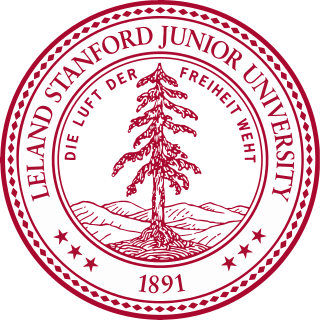
Stanford University is a private research university in Stanford, California. The campus occupies 8,180 acres, among the largest in the United States, and enrolls over 17,000 students.

New College is one of the constituent colleges of the University of Oxford in the United Kingdom. Founded in 1379 by William of Wykeham in conjunction with Winchester College as its feeder school, New College was one of the first colleges in the university to admit and tutor undergraduate students.

420, 4:20 or 4/20 is cannabis culture slang for marijuana and hashish consumption, especially smoking around the time 4:20 pm (16:20). It also refers to cannabis-oriented celebrations that take place annually on April 20.
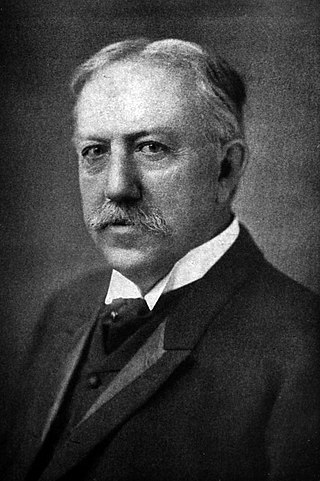
David Starr Jordan was the founding president of Stanford University, serving from 1891 to 1913. He was an ichthyologist during his research career. Prior to serving as president of Stanford University, he had served as president of Indiana University from 1884 to 1891.
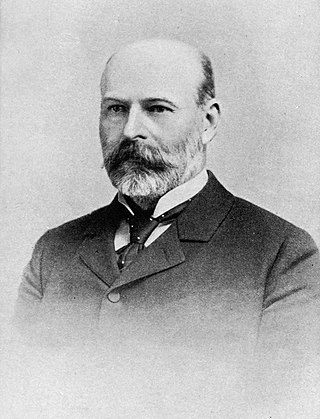
John Casper Branner was an American geologist and academic who discovered bauxite in Arkansas in 1887 as State Geologist for the Geological Survey of Arkansas. He was chair of the Departments of Botany and Geology at Indiana University Bloomington and later at Stanford University. He was a member of the founding faculty at Stanford and served as the university's second president. He served as president of the Geological Society of America in 1904. He was president of the Seismological Society of America in 1911. He was an expert in Brazilian geology, among many other things.

The Cecil H. Green Library is the main library on the Stanford University campus and is part of the SUL system. It is named for Cecil H. Green.

Stanford Memorial Church is located on the Main Quad at the center of the Stanford University campus in Stanford, California, United States. It was built during the American Renaissance by Jane Stanford as a memorial to her husband Leland. Designed by architect Charles A. Coolidge, a student of Henry Hobson Richardson, the church has been called "the University's architectural crown jewel".
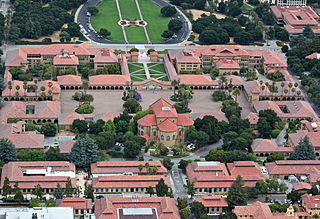
The Main Quadrangle, or more commonly Main Quad or simply Quad, is the heart and oldest part of Stanford University in California. The collection of connected buildings was started in 1887 and completed in 1906. The Quad was damaged in the 1906 earthquake, repaired, less severely damaged in an 1989 earthquake, and repaired again. The exteriors have remained almost the same since the beginning, though the interiors of most of the buildings have changed radically. The Main Quad is still used for its original purposes of teaching, research, and administration.
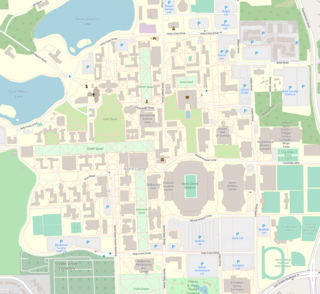
The campus of the University of Notre Dame is located in Notre Dame, Indiana, and spans 1,250 acres comprising around 170 buildings. The campus is consistently ranked and admired as one of the most beautiful university campuses in the United States and around the world, particularly noted for the Golden Dome, the Basilica and its stained glass windows, the quads and the greenery, the Grotto, Touchdown Jesus, its collegiate gothic architecture, and its statues and museums. Notre Dame is a major tourist attraction in northern Indiana; in the 2015–2016 academic year, more than 1.8 million visitors, almost half of whom were from outside of St. Joseph County, visited the campus.
This is the history of Stanford University.

More than 160 monuments and memorials to the Confederate States of America and associated figures have been removed from public spaces in the United States, all but five since 2015. Some have been removed by state and local governments; others have been torn down by protestors.

A statue of Alexander von Humboldt is installed on the exterior of Building 420, in Stanford University's Main Quad, in the U.S. state of California.
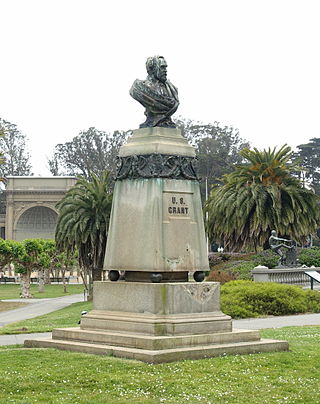
A bronze bust of Ulysses S. Grant was installed in San Francisco's Golden Gate Park, in the U.S. state of California, in 1896 and removed in 2020. The original sculptor of the bust was a renowned German born sculptor by the name of Rupert Schmid who had been noted for his commissioned work including “The Progress of Civilization”, a memorial arch at Stanford University before it was toppled in an earthquake in 1906.
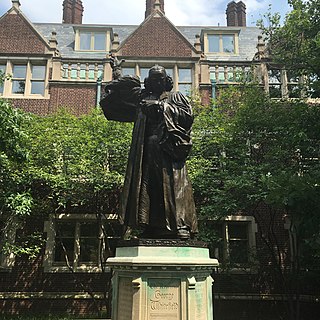
The Reverend George Whitefield is a monumental statue which once stood on the campus of the University of Pennsylvania in Philadelphia, Pennsylvania, United States. Dedicated in 1919, it was designed by sculptor R. Tait McKenzie and honors its namesake George Whitefield, Anglican cleric who was a founder of Methodism. In 2020, in reaction to the George Floyd protests, the university administration removed the statue due to Whitefield's defense of slavery.

Ezra Cornell is a monumental statue in Ithaca, New York, United States. Located on the Arts Quad of the Cornell Central Campus, the monument honors Ezra Cornell, the co-founder and namesake of Cornell University. The statue, designed by Hermon Atkins MacNeil, was dedicated in 1919.


















